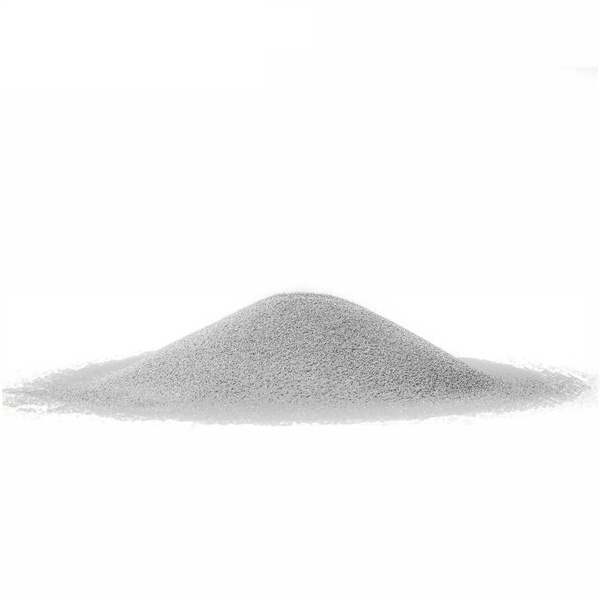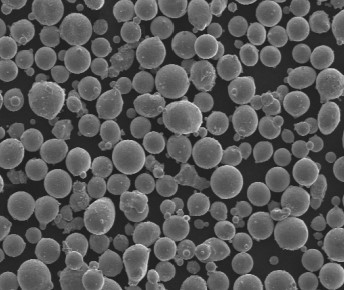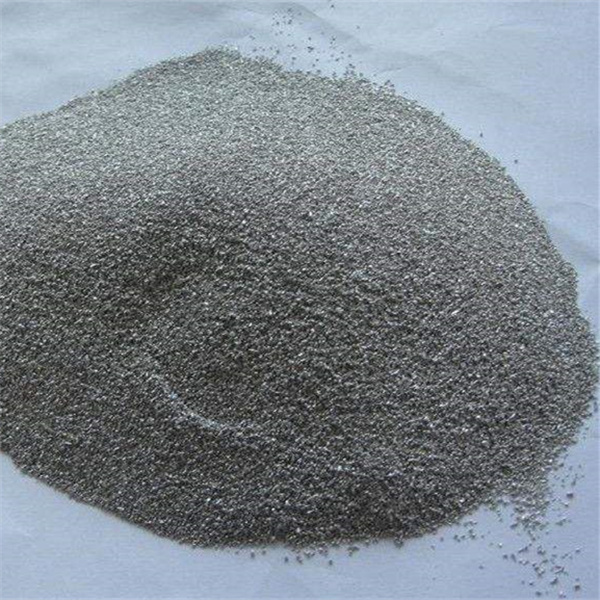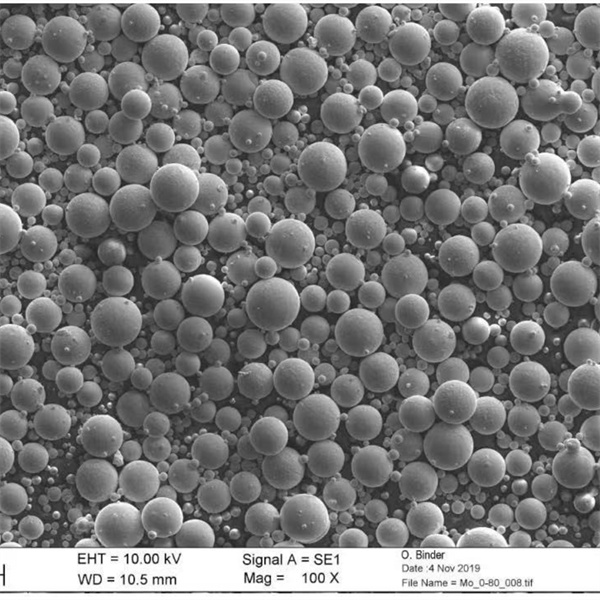AlMgScZr Powder
AlMgScZr powder is an aluminum alloy containing magnesium, scandium and zirconium as the main alloying elements. It exhibits excellent strength, weldability and corrosion resistance while maintaining the low density advantage of aluminum.
Low MOQ
Provide low minimum order quantity to meet different needs.
OEM & ODM
Provide customized products and design services to meet unique customer needs.
Adequate Stock
Ensure fast order processing and provide reliable and efficient service.
Customer Satisfaction
Provide high quality products with customer satisfaction at the core.
share this product
Table of Contents
Overview of AlMgScZr Powder
AlMgScZr powder is an aluminum alloy containing magnesium, scandium and zirconium as the main alloying elements. It exhibits excellent strength, weldability and corrosion resistance while maintaining the low density advantage of aluminum.
Key properties and advantages of AlMgScZr powder include:
AlMgScZr Powder Properties and Characteristics
| Properties | Details |
|---|---|
| Composition | Al-Mg-Sc-Zr alloy |
| Density | 2.7 g/cc |
| Particle shape | Spherical |
| Size range | 10-75 microns |
| Apparent density | Up to 60% of true density |
| Flowability | Excellent |
| Strength | Very high for Al alloy powder |
| Weldability | Excellent |
AlMgScZr powder enables fabrication of lightweight structural and functional components across aerospace, automotive, and industrial sectors needing high specific strength.
AlMgScZr Powder Composition
Typical composition of AlMgScZr powder:
AlMgScZr Powder Composition
| Element | Weight % |
|---|---|
| Aluminum | Balance |
| Magnesium | 0.2-1% |
| Scandium | 0.2-0.7% |
| Zirconium | 0.05-0.25% |
| Silicon | 0.1% max |
| Iron | 0.1% max |
| Copper | 0.1% max |
- Aluminum forms the matrix providing low density
- Magnesium enhances strength through solid solution strengthening
- Scandium enables precipitation hardening for peak strength
- Zirconium promotes fine recrystallized grain structure
- Other elements present only as impurities
The composition is optimized to maximize the precipitation hardening response and deliver exceptional strength.
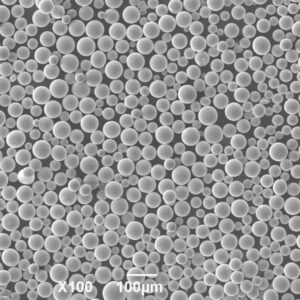
AlMgScZr Powder Physical Properties
AlMgScZr Powder Physical Properties
| Property | Values |
|---|---|
| Density | 2.7 g/cc |
| Melting point | 640-655°C |
| Electrical resistivity | 4.5-5.5 μΩ-cm |
| Thermal conductivity | 150-180 W/mK |
| Thermal expansion | 21-24 x 10^-6 /K |
| Maximum service temperature | 250°C |
- Very low density compared to steels and titanium alloys
- Melting point is moderately high for an aluminum alloy
- High electrical and thermal conductivity
- Relatively high CTE necessitates design considerations
- Can be used for prolonged periods up to 250°C
The properties make AlMgScZr well suited for lightweight structural applications across automotive, aerospace and other sectors.
AlMgScZr Powder Mechanical Properties
AlMgScZr Powder Mechanical Properties
| Property | Values |
|---|---|
| Yield strength | 400-500 MPa |
| Tensile strength | 480-570 MPa |
| Elongation | 7-10% |
| Hardness | 115-150 HB |
| Shear strength | 330 MPa |
| Fracture toughness | 29-35 MPa√m |
- Very high strength for an aluminum alloy
- Significantly stronger than other non heat-treatable Al alloys
- Reasonable ductility in peak aged condition
- Relatively high fracture toughness
- Strength can be tailored through aging treatment
The properties make AlMgScZr an exceptional choice for structural parts needing high strength-to-weight ratio.
AlMgScZr Powder Applications
AlMgScZr Powder Applications
| Sector | Uses |
|---|---|
| Aerospace | Airframes, wings, fuselage skins |
| Automotive | Chassis, suspension parts |
| Industrial | Robot arms, lifting equipment |
| Additive manufacturing | High performance components |
Some specific product uses:
- Aircraft structural frames, bulkheads, wing spars
- Automotive transmission casings, engine blocks
- Industrial robot arms, lifting equipment
- Additive manufacturing of topology optimized components
- Electronic enclosures needing thermal management
AlMgScZr provides maximum strength with minimum weight penalty across these critical applications.
AlMgScZr Powder Specifications
Key specifications for AlMgScZr powder include:
AlMgScZr Powder Standards
| Standard | Description |
|---|---|
| ASTM B951 | Standard for precipitation hardened aluminum alloys |
| DIN 1718 | Aluminum and aluminum alloys designations |
| EN 586-2 | Forgings for high strength structural applications |
| AMS 4413 | Aluminum alloy powder compositions for additive manufacturing |
These define:
- Chemical composition limits of AlMgScZr
- Required mechanical properties in peak aged condition
- Approved powder production method – inert gas atomization
- Impurity limits for elements like Fe
- Quality testing protocols
- Proper handling and storage
Meeting certification requirements ensures optimal alloy performance.
AlMgScZr Powder Particle Sizes
AlMgScZr Powder Particle Size Distribution
| Particle Size | Characteristics |
|---|---|
| 10-25 microns | Ultrafine powder used in laser AM processes |
| 25-45 microns | Common size range for laser bed and binder jetting |
| 45-75 microns | Larger sizes used in cold spraying |
- Finer powder provides higher resolution and surface finish
- Coarser powder suitable for high deposition rate processes
- Size range tailored based on AM production method used
- Spherical morphology maintained in all sizes
Controlling particle size distribution and shape is critical for AM processing, packing density, and final part properties.
AlMgScZr Powder Apparent Density
AlMgScZr Powder Apparent Density
| Apparent Density | Details |
|---|---|
| Up to 60% of true density | For spherical powder shape |
| 1.5 – 1.7 g/cc | Improves with greater packing density |
- Spherical morphology provides high apparent density
- Higher density improves powder flow and bed packing in AM
- Reduces entrapped gas porosity in final part
- Maximizing density minimizes press cycle time
Higher apparent density results in better manufacturing productivity and part performance.
AlMgScZr Powder Production Method
AlMgScZr Powder Production
| Method | Details |
|---|---|
| Gas atomization | High pressure inert gas breaks up molten metal stream into fine droplets |
| Vacuum induction melting | High purity input materials melted in vacuum |
| Multiple remelting | Improves chemical homogeneity |
| Sieving | Classifies powder into different particle size fractions |
- Gas atomization with inert gas produces clean, spherical powder
- Vacuum processing minimizes gaseous impurities
- Multiple remelts improve uniformity of composition
- Post-processing provides particle size distribution control
Fully automated methods combined with stringent quality control result in consistent AlMgScZr powder suitable for critical applications.
AlMgScZr Powder Pricing
AlMgScZr Powder Pricing
| Factor | Impact on Price |
|---|---|
| Purity grade | Price increases for higher purity |
| Particle size | Ultrafine powder more expensive |
| Order quantity | Price reduces for bulk orders |
| Production method | Use of multiple remelts increases cost |
| Packaging | Argon filled cylinders cost more |
Indicative Pricing
- AlMgScZr powder: $80-120 per kg
- Large volume pricing can be up to 40% lower
Pricing depends on purity, particle size, order volume, production method, and packaging.
AlMgScZr Powder Suppliers
AlMgScZr Powder Suppliers
| Company | Location |
|---|---|
| Rio Tinto | Canada |
| TLS Technik | Germany |
| Sandvik Osprey | UK |
| Praxair | USA |
| AMC Powders | UK |
| Riga Technical University | Latvia |
Selection factors for suppliers:
- Powder grades and particle sizes offered
- Production capacity and lead times
- Quality control and consistency
- Compliance with specifications like ASTM B951
- Pricing levels based on order volume
- Technical expertise and customer support
AlMgScZr Powder Handling and Storage
AlMgScZr Powder Handling
| Recommendation | Reason |
|---|---|
| Ensure proper ventilation | Avoid exposure to fine metallic particles |
| Use appropriate PPE | Prevent accidental inhalation or ingestion |
| Avoid ignition sources | Powder can combust in oxygen atmosphere |
| Follow safe protocols | Reduce health and fire hazards |
| Store sealed containers | Prevent contamination or oxidation |
AlMgScZr powder is relatively stable but general precautions are still recommended for safe handling and maintaining purity.
AlMgScZr Powder Inspection and Testing
AlMgScZr Powder Testing
| Test | Details |
|---|---|
| Chemical analysis | Verifies composition using OES or XRF spectroscopy |
| Particle size distribution | Laser diffraction analysis |
| Apparent density | Hall flowmeter test per ASTM B212 standard |
| Powder morphology | SEM imaging of particle shape |
| Flow rate analysis | Gravity flow rate through specified nozzle |
| Moisture measurement | Loss on drying test |
Testing ensures the powder meets the required chemical purity, particle characteristics, apparent density, morphology, and flow specifications as per applicable standards.
AlMgScZr Powder Pros and Cons
Advantages of AlMgScZr Powder
- Very high strength for an aluminum alloy
- Retains strength up to 250°C
- Excellent corrosion resistance
- High fracture toughness and fatigue strength
- Good weldability using conventional techniques
- Low density provides weight savings
Limitations of AlMgScZr Powder
- Relatively expensive compared to other aluminum grades
- Requires controlled heat treatment for optimal properties
- Limited high temperature creep resistance
- Restricted hot formability in peak aged condition
- Susceptible to galvanic corrosion if improperly protected
Comparison With 6061 Aluminum Alloy Powder
AlMgScZr vs 6061 Al Alloy Powder
| Parameter | AlMgScZr | 6061 Al |
|---|---|---|
| Density | 2.7 g/cc | 2.7 g/cc |
| Tensile strength | 480-570 MPa | 250-310 MPa |
| Yield strength | 400-500 MPa | 55-275 MPa |
| Weldability | Excellent | Good |
| Corrosion resistance | Excellent | Good |
| Cost | High | Low |
| Uses | Aerospace, automotive | General applications |
- AlMgScZr provides much higher strength and corrosion resistance
- 6061 Al offers moderate strength at low cost
- AlMgScZr preferred for critical structural components
- 6061 Al widely used for general applications
AlMgScZr Powder FAQs
Q: What are the main applications of AlMgScZr powder?
A: Key applications are aerospace components like airframes and wings, automotive parts like chassis and wheels, industrial robot arms and lifting equipment, and additive manufacturing of high performance topology optimized components.
Q: How does scandium strengthen AlMgScZr alloy?
A: Scandium enables precipitation hardening by forming nano-scale Al3Sc precipitates during aging treatment. This impedes dislocation movement substantially increasing the strength.
Q: What precautions should be taken when working with AlMgScZr powder?
A: Recommended precautions include proper ventilation, avoiding ignition sources, using appropriate PPE, following safe handling protocols, inert atmosphere, and storing sealed containers away from moisture or contaminants.
Q: How does AlMgScZr compare with AlZnMgCu alloy powder?
A: AlMgScZr provides higher strength, weldability, and corrosion resistance than 7000 series Al alloys like AlZnMgCu. It is preferred for critical structural parts while AlZnMgCu is more economical.
About Met3DP
Product Category
HOT SALE
CONTACT US
Any questions? Send us message now! We’ll serve your request with a whole team after receiving your message.

Leading provider of additive manufacturing solutions headquartered in Qingdao, China.
COMPANY
PRODUCT
cONTACT INFO
- Qingdao City, Shandong, China
- [email protected]
- [email protected]
- +86 19116340731





